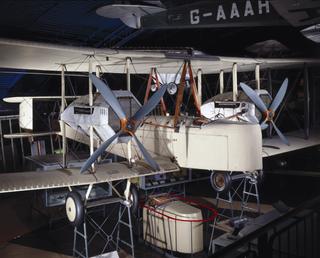
Gloster Aircraft, E28/39, (without engine)










Gloster Aircraft, E28/39, (without engine)
The E28/39 was the first Allied jet aircraft and it had its first official flight on 15 May 1941. The airframe was built by Gloster Aircraft Company and proved the turbojet concept which had been under development by Frank Whittle and his company since 1936. The E28/39 was surprisingly successful considering the novelty of the technology it used, and was the first real proof that jet propulsion was a viable alternative for the propeller.
Details
- Category:
- Aeronautics
- Object Number:
- 1946-110/1
- Measurements:
-
estimate: 2228 kg
- type:
- aircraft
- credit:
- Ministry of Supply (Air 2(c))




